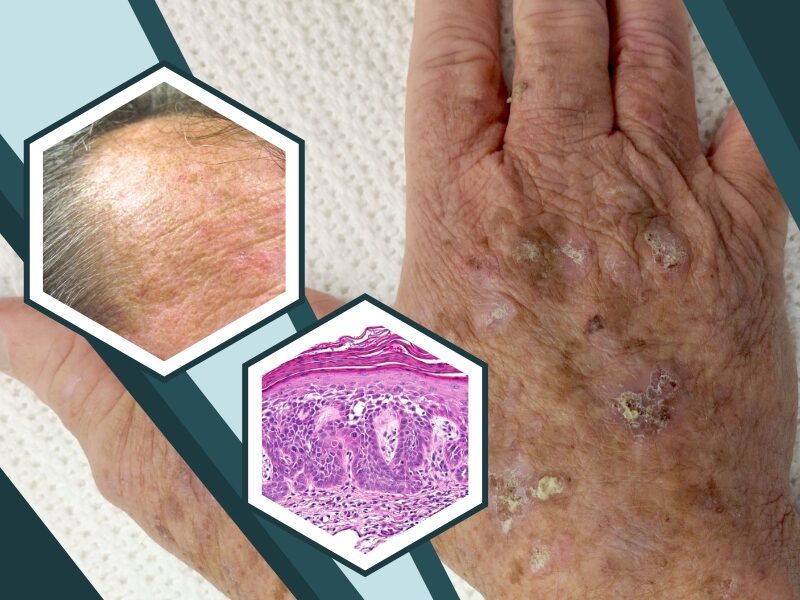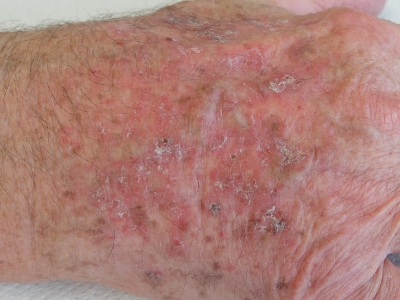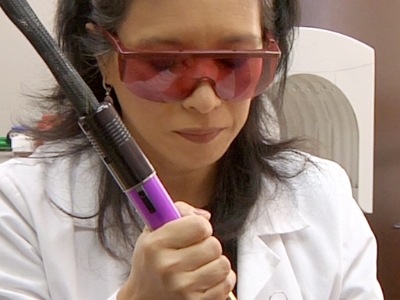Actinic Keratosis: Symptoms, Risk Factors, Causes, and Treatment

Actinic keratosis (AK) is a skin disorder. AK is a type of pre-cancer, which means that if you don’t treat the condition, it could turn into cancer. Without treatment, AK can lead to a type of skin cancer called squamous cell carcinoma. About 58 million Americans have one or more spots of actinic keratosis. AK is the most common type of skin pre-cancer.
What is Actinic Keratosis?
Actinic keratosis is a rough, scaly patch on the skin that develops from years of sun exposure. It’s often found on the face, lips, ears, forearms, scalp, neck, or back of the hands.
Also known as solar keratosis, actinic keratosis grows slowly and usually first appears in people over 40. You can reduce your risk of this skin condition by minimizing sun exposure and protecting your skin from ultraviolet (UV) rays.
Signs and Symptoms of Actinic Keratosis

Usually, the first signs of actinic keratosis are rough, raised bumps on your skin. They can vary in color but often have a yellow or brown crust on top. These bumps may be:
- Gray
- Pink
- Red
- The same color as your skin
Symptoms may also include:
- Bleeding
- Burning, stinging, or itching
- Dry, scaly lips
- Hornlike skin growths that stick out (like an animal’s horn)
- Loss of color in the lips
- Pain or tenderness
It can be challenging to distinguish between noncancerous spots and cancerous ones. So it’s best to have new skin changes evaluated by a healthcare provider, especially if a scaly spot or patch persists, grows, or bleeds.
What Causes Actinic Keratosis?
The most common cause of actinic keratosis is too much exposure to ultraviolet (UV) light. UV light comes from the sun or indoor tanning equipment like beds. UV light can damage your outer layer of skin cells, called keratinocytes.
Risk Factors for Actinic Keratosis
UV rays from the sun and tanning beds cause almost all actinic keratosis. Damage to the skin from UV rays builds up over time. It means that even short-term exposure to the sun regularly can build up over a lifetime and increase the risk of actinic keratosis.
Some people are more at risk than others, including:
- People with pale skin, blonde or red hair, and blue, green, or gray eyes
- People with darker skin, hair, and eyes who have been exposed to UV rays without protection
- Older adults
- People with suppressed immune systems (due to chemotherapy, AIDS, organ transplant, or other causes)
- People with rare conditions that make the skin very sensitive to UV rays, such as albinism or xeroderma pigmentosum (XP)
Treatment, Management, and Prevention of Actinic Keratosis
Your healthcare provider will likely determine whether you have an actinic keratosis simply by looking at your skin. If there’s any doubt, your healthcare provider may do other tests, such as a skin biopsy. During a skin biopsy, a small skin sample is taken for analysis in a lab. A biopsy can usually be done in a clinic after a numbing injection. Even after treatment for actinic keratosis, your healthcare provider might suggest you have your skin checked at least once a year for signs of skin cancer.

An actinic keratosis sometimes disappears but might return after more sun exposure. It’s hard to tell which actinic keratosis will develop into skin cancer, so they’re usually removed as a precaution.
Many methods are used to remove actinic keratosis, including:
- Freezing (cryotherapy)
- Scraping (curettage)
- Laser therapy
- Photodynamic therapy
If you have several actinic keratoses, your healthcare provider might prescribe a medicated cream or gel to remove them, such as:
- Imiquimod Cream – is in a class of medications called immune response modifiers. Imiquimod works on the immune system to help the body fight viruses that cause warts. It does not destroy the viruses directly. This medicine is for use on the skin only. Do not get it in your eyes, nose, mouth, vagina, or anus. Please do not use it on skin areas with cuts, scrapes, or burns. If it does get on these areas, rinse it immediately with water.



